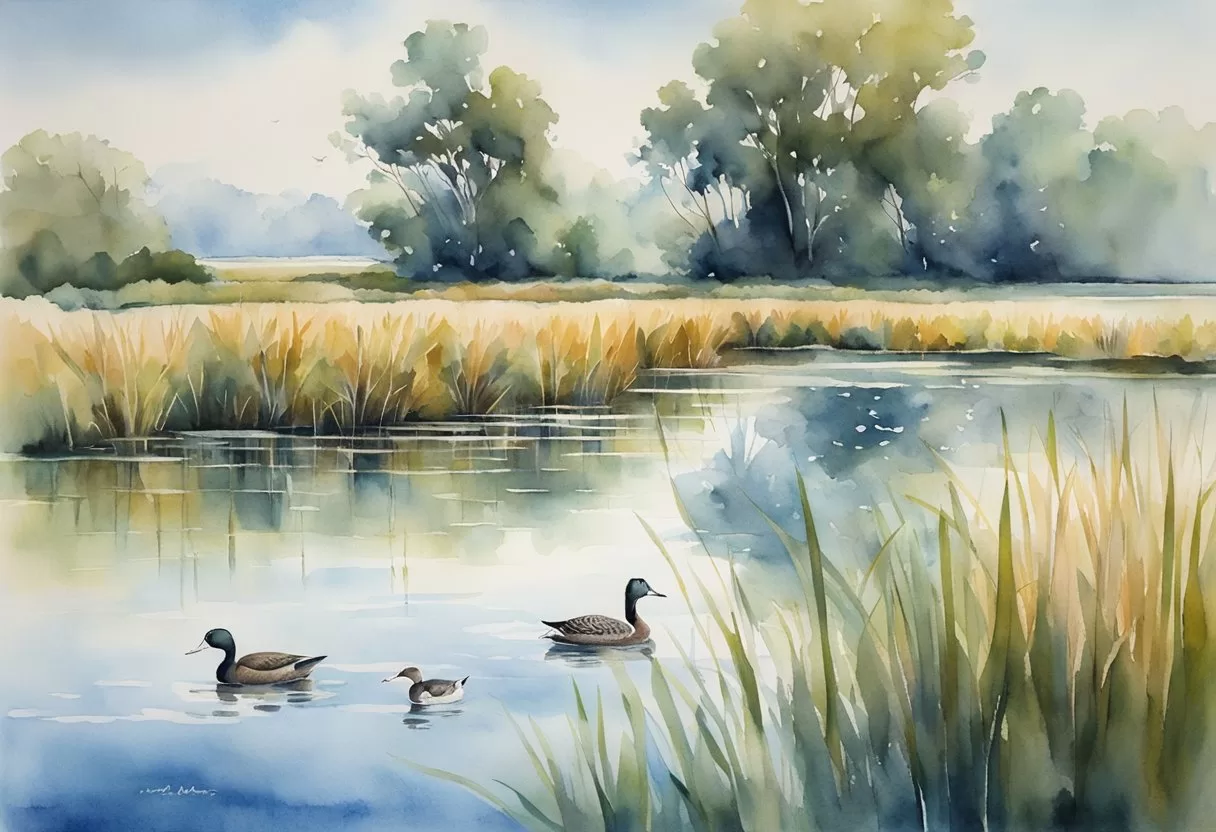Overview of Migratory Waterfowl
Migratory waterfowl are crucial components of wetland ecosystems, exhibiting unique behaviors and patterns associated with seasonal movement. Understanding the different species, their migration timing, and the importance of wetlands provides valuable insights into the dynamics of these birds.
Distinguishing Waterfowl Species
Migratory waterfowl encompass a variety of species, each with distinct characteristics. Common types include ducks, geese, and swans. Among ducks, the mallard is one of the most recognizable, known for its vibrant plumage. Other notable species include the American wigeon, characterized by its greenish cap, and the northern pintail, known for its elegant neck and pointed tail.
Canada geese are prominent in North America, recognized for their honking calls and distinct V-shaped flying formations. Additional waterbird species include snow geese, which travel in large flocks, and eared grebes, known for their unique breeding plumage. The diversity in waterfowl leads to varied ecological roles within their wetland habitats.
Understanding Migration Timing
Migration timing for waterfowl is influenced by several factors, including daylight length and environmental conditions. In March, many species, such as blue-winged teal and American white pelicans, begin their northward journey from tropical winter areas to breeding grounds.
Waterfowl exhibit different migration patterns; for instance, some ducks depart early while others may linger longer in their winter habitats. The timing is critical for successful breeding. Delays in migration can affect food availability and habitat conditions essential for nesting and raising young.
The Role of Wetlands in Migration
Wetlands serve as vital stopover points and breeding grounds for migratory waterfowl. These environments supply necessary resources such as food, shelter, and nesting sites. Diverse waterbird species composition in wetlands includes both diving ducks and surface feeders.
During migration, wetland areas host abundant plant life, attracting waterfowl that feed on seeds, aquatic invertebrates, and other resources. The health of these ecosystems directly impacts waterfowl populations, as habitat loss threatens their migration routes. Conservation of wetland areas is critical to ensure the survival of these migratory birds.
Ecological Impact and Conservation

Understanding the ecological impact of migratory waterfowl is crucial for effective conservation efforts. Habitat loss, climate change, and dedicated conservation initiatives play pivotal roles in shaping avian populations and their environments.
Habitat Loss and Population Declines
Habitat loss remains one of the most significant threats to migratory waterfowl. Wetland drainage for agriculture, urban development, and industrial activities substantially reduces available breeding and wintering grounds.
As a result, many waterfowl species experience population declines. Vital migratory flyways are disrupted, leading to decreased biodiversity. This is particularly evident in regions where wetlands are essential for feeding and nesting.
Conservation strategies must focus on habitat restoration and preservation to support these vital ecological regions. Investing in wetland conservation is often more effective than creating new habitats.
Climate Change and Its Effects
Climate change poses a formidable challenge to migratory waterfowl. Altered climatic conditions affect breeding timing and migration patterns. Changes in temperature and precipitation impact food availability in both wetlands and migratory routes.
Recent studies indicate that a majority of migratory bird species lack adequate protection in light of these shifting climatic trends. Contaminated stopover sites in polluted environments further exacerbate mortality rates among waterfowl.
Conservation practices must account for these evolving environmental conditions and adjust management strategies accordingly to ensure sustainable populations.
Conservation Initiatives
Numerous conservation initiatives are being implemented to address the challenges facing migratory waterfowl. Legislative measures like the Migratory Bird Treaty Act of 1918 exemplify governmental efforts to protect these species and their habitats.
Collaborative efforts with non-profit organizations bolster these initiatives, focusing on restoration and sustainable practices within critical habitats.
Grassroots movements also play an essential role, fostering community awareness and support for wetland conservation. By integrating science, policy, and local involvement, these initiatives aim to secure the future of avian populations through effective habitat management and preservation.
Practical Information for Birding Enthusiasts
Birding enthusiasts can enhance their experiences by understanding best practices and identifying key locations for observing migratory waterfowl in wetlands. This knowledge enables them to enjoy the activity while contributing positively to bird conservation efforts.
Best Practices for Ethical Birding
Ethical birding maximizes the enjoyment of the experience while minimizing disturbance to wildlife. Birders should maintain a respectful distance from nests and feeding areas to avoid creating stress for the birds. Using binoculars or spotting scopes can help achieve this.
Minimizing noise is crucial. Loud voices or sudden movements can scare waterfowl away. Observers should also avoid trampling sensitive vegetation, particularly in wetlands, as many plant species are vital for maintaining habitat.
Additionally, respecting other visitors and their experiences is important. Adhering to designated trails and observing any local regulations contributes to habitat conservation efforts. Engaging in responsible birding practices protects fragile ecosystems throughout North America, especially in migration sites along routes like the Pacific Flyway and in the Prairie Pothole Region.
Identifying Prime Birding Locations
To observe waterfowl, it is essential to know where to go. Active migration sites include areas like the Great Basin Wetlands and various national wildlife refuges. These locations often provide optimal conditions for bird feeding and resting.
Local resources such as birding apps and regional guidebooks can help identify specific wetlands and migratory routes. Engaging with local birding groups or conservation organizations can provide insights into the best times for viewing, as well as information on habitat conservation efforts.
Many wetlands also serve as hunting areas during migration seasons, offering birders a chance to see diverse species. Checking recent sighting reports can help enthusiasts discover where large numbers of migratory waterfowl are currently gathering, ensuring a rewarding birding experience.
Share this content:

Post Comment
You must be logged in to post a comment.